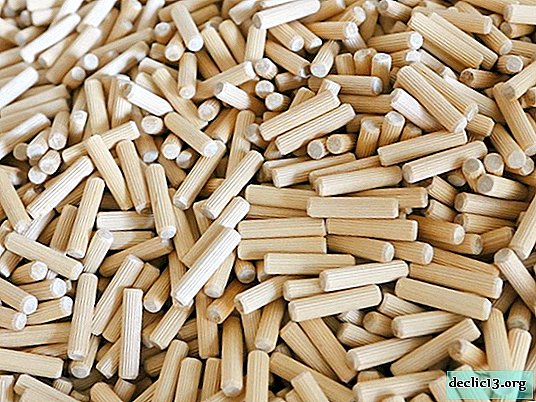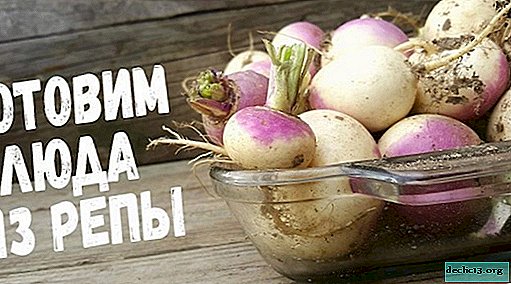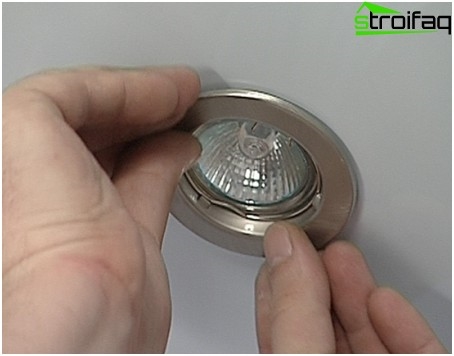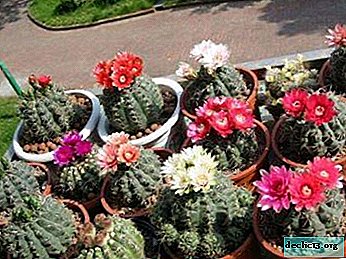Meyer Evergreen Lemon: Description, Plant Care, Propagation, Disease, and Pest
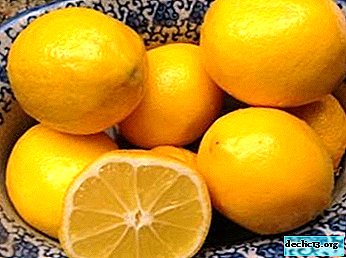
Meyer lemon is an evergreen plant of the genus Citrus. Gardeners love it for plentiful flowering and fruiting.
It is not whimsical and does not require special care, and also adapts well to room conditions.
And thanks to the decorative properties, it fits perfectly into any interior. Find out full information about the care, the rules of growing and the appearance of Meyer's lemon from the article below, as well as get practical tips and watch a useful video from which you can get additional information.
Botanical Description
What is this plant? Lemon Meyer (Latin name Cítrus × méyerii) - a perennial plant of the Root family, is a hybrid of orange and lemon. It was first brought to the United States from China by scientific researcher Frank Meyer in 1908. The second name of the plant is Chinese dwarf lemon.
At home it grows in natural conditions and reaches a height of 6-8 meters. Gradually from the USA, the variety spread throughout the world, and it began to be grown as a houseplant. And its fruits began to be used in cooking.
Description of the appearance, flowering and fruits and photos of the plant
Indoor grows 1-2 meters. The crown is round, compact, well amenable to formation. The leaves are small, shiny, oval, dark green in color, with serrated edges. Inflorescence in the form of a bunch.
Reference. The flowers are snow-white or violet, smelling strongly, are formed both on adult shoots and young branches.Fruits are small in size, round, without a nipple, from 70 to 140 grams. The peel of the lemon is a dark yellow color, after a while it turns orange. The peel is smooth and thin. Seeds 10-12 pieces per fruit.
Below are photos of Meyer's lemon:





What is the difference from other species?
Lemon Meyer has abundant fruiting and flowering. At the same time, the flesh is dark yellow, tastes sweet and delicate, more like an orange, it is often consumed and added to unripe food. It is considered the most non-acidic variety of all types of lemons.
Fruits the plant year-round, and the fruits themselves are much smaller in size than other varieties.
Home care for beginners
Lemon Meyer is unpretentious and not capricious in leaving, easily adapts to room conditions. For abundant growth and fruiting, it is enough to adhere to certain maintenance rules.
Temperature
The optimum temperature for growing plants in the spring and summer is 20 degrees. In winter, for abundant fruiting, it is reduced to 12 degrees. They contain lemon away from windows and heating appliances, as overheating and drafts negatively affect the flower. The plant also reacts very poorly to temperature changes, therefore, lemon is taken out to the balcony only when it is warm and not left overnight.
Watering
 Water the lemon abundantly., in spring and summer, every day, in winter, rarely and moderately, no more than twice a week. To prevent stagnation of water and ensure respiration to the roots, the topsoil is periodically loosened.
Water the lemon abundantly., in spring and summer, every day, in winter, rarely and moderately, no more than twice a week. To prevent stagnation of water and ensure respiration to the roots, the topsoil is periodically loosened.
The water used for irrigation filtered or settled to room temperature. Cold water leads to falling leaves and fruits. Lemon grows well with high humidity, at least 60-70%. Therefore, the plant is regularly sprayed from the spray gun.
Water containers or humidifiers are installed next to the pot.Shine
Meyer lemon is a photophilous plant. Place it on the western or eastern windowsills. On the southern windows and in the afternoon, the flower is shaded from direct sunlight, otherwise the leaves may get burned.
When growing on the north side and during dormancy, additional lighting is installed in the room in the form of fluorescent lamps. A daylight lemon needs at least 12 hours, otherwise the plant can lose all the leaves.
Priming
For active growth and fruiting, lemon needs a nutritious, loose, neutral acidity soil. The substrate is purchased in a store for citrus plants. Or they cook it on their own, for this in equal proportions mix:
- sheet earth;
- humus and sand;
- also add 2 parts of turf land.
When preparing the soil for planting adult plants, oily clay is necessarily added to its composition.
Pruning
To give the crown a beautiful appearance, it is trimmed. The process is as follows:
- The seedling stem is shortened to a length of 20 cm, while 2-3 developed buds are left in the upper part.
- Skeletal branches grow from the left kidneys, 3-4 of them are selected, and the rest are cut off.
- The shoots of the second and third order should be no more than 10 and 5 centimeters, respectively.
After the appearance of shoots of the 4th order, the formation of the crown is considered complete. But every spring also carry out sanitary pruning, remove yellow, damaged and dry leaves.
Top dressing
 In the process of active growth and fruiting, the plant is fertilized. Perform the procedure once every 2 weeks.
In the process of active growth and fruiting, the plant is fertilized. Perform the procedure once every 2 weeks.
They make complex mineral fertilizers, in the composition of which there is nitrogen, potassium or phosphorus. Dilute them with water according to the instructions.
In the winter, feeding is completely stopped. The plant simply ceases to need them, but this does not mean that during this period it does not require care.
Pot
The pot is selected more than the previous one by several centimeters. Clay pots with a good drainage hole are preferred. In no case should a young plant be planted in a large container, since there is a risk of rotting the root system.
Transfer
Young lemon is transplanted annually, and an adult once every 2-3 years. Carry out the process in the fall before cold weather or in the early spring.
If the plant is sick, does not bear fruit, and the leaves fall, then such a plant is transplanted immediately.
The procedure consists of the following steps:
- At the bottom of the tank pour a drainage layer and a little soil.
- The soil in the pot is abundantly watered and the lemon is carefully pulled out, being careful not to touch the root system.
- The plant is set in the middle of a new flowerpot with an earthen lump and the voids are covered with a substrate. The soil is lightly pressed, but not compacted.
Wintering
The rest period is very important for a lemon. Since the beginning of November, the room temperature has been lowered to 12 degrees, if this is not done, then there will be no fruits. At the same time, watering is also reduced, warm water is introduced as the top soil layer dries up and no more than 2 times a week. To provide a sufficient amount of light, phytolamps are installed in the room.
Features of outdoor cultivation
In open ground, lemon grows only in southern countries. In a cold climate, the tree does not withstand severe frosts and quickly dies. Lemon reacts poorly to temperature changes and strong drafts. Therefore, even if the plant is taken out to the balcony or to the garden, it is gradually tamed to a new place. In the evening they bring into the house, and in the afternoon they shade from the sun.
Propagation Features
To obtain a young plant, it is propagated at home. There are two ways to do this:
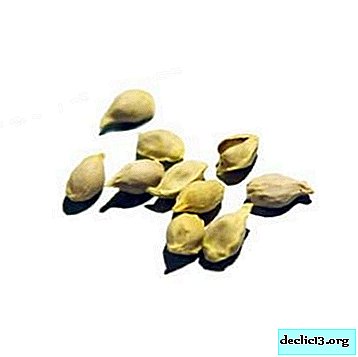 The seeds.
The seeds.- Bones are removed from the fruits, they are thoroughly washed and dried.
- Then, seeds are placed in a cloth moistened with water and put into a box, while periodically moistening the tissue.
- When the first sprouts appear, the bones are transplanted into the ground for young plants, they are deepened by 2-4 centimeters.
- Water regularly.
- When reaching 15 centimeters in height, seedlings are planted in a large container.
 Cuttings.
Cuttings.- Cuttings with 4-5 leaves are cut from the mother tree and placed in a weak solution of potassium permanganate for a day.
- The cut is treated with crushed coal.
- A drainage layer is laid at the bottom of the pot, soil is poured on top and the lemon is deepened by 2-3 centimeters.
- Cover with a film on top and moisturize regularly.
- After 2-3 weeks, remove the greenhouse. And they look after, like an adult plant.
Maturation
Mayer lemon ripens for about 9 months. Remove it with scissors or a sharp knife as soon as it turns yellow and slightly soft. Harvesting should not be delayed, since this variety does not lie for long and deteriorate quickly. The refrigerator is not stored for more than 3-5 weeks.
Diseases and Pests
Lemon with improper care can undergo various diseases. You can determine this by the following criteria:
- The leaves brightened. This happens when there is a lack of nutrients or light. The plant is additionally fed and highlighted.
- Leaves wither and fall. Lemon has not been watered for a long time. Start watering and spraying.
And also the plant can be attacked by such pests as a scab or a spider mite. At the first detection, the tree is washed with a stream of water from the shower. With severe infection, insecticides are used.
Meyer lemon - an exotic plant that perfectly acclimates to room conditions. He is capricious and undemanding in care. It is enough to water, fertilize, transplant and provide the necessary wintering in a timely manner, and then he will give a large number of delicious fruits.
Useful video
Learn more about Meyer Lemon from the video:

 The seeds.
The seeds. Cuttings.
Cuttings.

